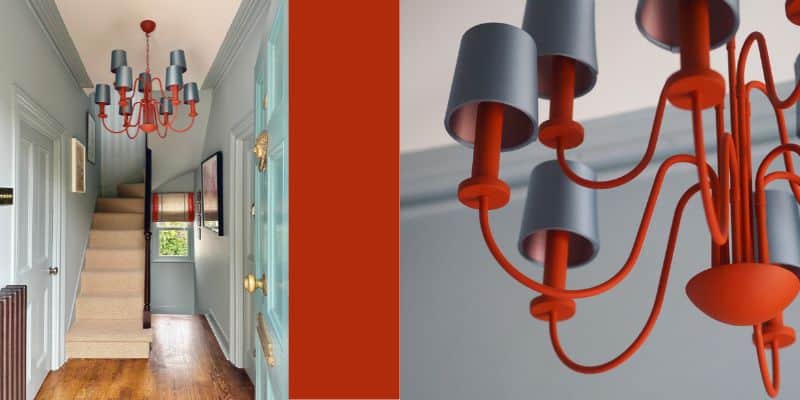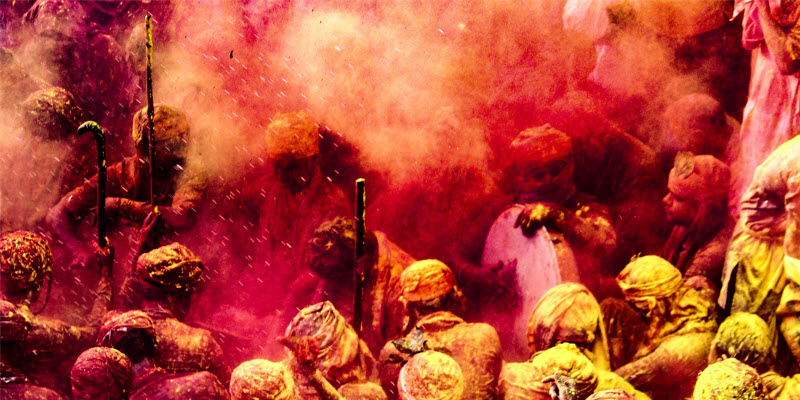The top 5 pitfalls to avoid when it comes to colour trends

Who doesn’t get excited or even a bit curious to know what the season and annual colour trends are going to be. Even for those of us like me don’t follow trends, we love to have a little peek.
And the reason we are often interested is because you can’t ignore that trends are big business. We see it in the products, the design styles whether that’s for interior schemes, fashion, technology and even cars. It’s marketed to us in magazines, social media, TV – we are being influenced by trends whether we realise it or not.
But as a designer, knowing how, where and when to use colour trends, or even if you should use them at all, is where things can get tricky. And so to for our clients. So here are the top 5 common pitfalls I often see when using colour trends and suggestions for how to avoid them.
1. Following colour trends slavishly
You only have to turn around and it feels like there’s another magazine or company telling you what the next must have colour trend is.
Being aware of trends can be useful especially if your client wants to discuss and incorporate them into their design.
But you don’t have to blindly follow trends. In fact, it can make your designs look very similar to others as well as stifle your unique creativity.
When we follow colour trends too closely personalisation is lost. Designers risk losing their creativity, distinctiveness, and originality. And ultimately designers can inadvertently sacrifice creating something unique because of the need for conformity.
Top tip: Instead look at trends as a form of inspiration, as a source for new ideas that you can blend with your own style and that works with the personality of your client or target market.
2. The colour trend is not giving them the feeling they want
We see a ‘new’ colour and we can think wow. It’s easy to choose a colour for its aesthetic appeal.
But colour has an impact on our emotions and influence have we think, feel and behave in an instant.
If we are just following colour trends, we can find ourselves putting together a scheme without considering the likely emotional impact those trend colours will have on our client or our target market.
Using a colour because it’s on trend doesn’t mean it’s going to support how they want to feel or behave in a way that they want to in the home, office, anywhere. If they are wearing the colour, it might not make them feel or look their glowing best (e.g. Peach Fuzz isn’t for everyone).
It's like the trend for grey. People were painting their houses grey and yet for a lot of them, it wasn't making them feel good or giving them the positive feelings that they wanted in their home. And this goes back to point number one, just choosing colours because you want to be on trend.
Top tip: Become aware of the psychological impact the colour has and ensure the trend colour is picking up the positive traits of that colour and not the adverse traits. This is done through assessing the trend colour in combination with the other colours in the palette, the context, placement and proportion used.
3. Everything and everyone ends up looking the same
That’s the thing about colour trends, everything and everyone can end up looking the same and then it’s no longer new or different. People get tired of seeing it everywhere and they are on the lookout for the next ‘new thing’.
This is not only a costly habit but it’s also not sustainable.
Top tip: Instead of constantly seeking the latest new trend to only end up looking like everyone else, consider creating timeless designs that are based on the personality of your client or target market.
4. Using a colour trend not relevant for your industry or customer
The challenge with a trend colour is they might be popular in a particular industry, like fashion, but it doesn't necessarily mean it's suitable for other markets or aligned with your clients' preferences and needs.
For example, a colour that looks great in the home might not be the best choice in say healthcare design as it could create a disruptive or unsettling atmosphere for the patients.
Top tip: Before using a colour just because it’s trending, ask yourself, is it relevant for my industry, for my brand, for my ideal target customers?
5. One colour doesn’t work for everyone, the same as one palette doesn’t work for everyone
With the greater awareness of neurodivergence, it’s important to recognise that people can have unique sensory responses to colour.
So we can’t just use a colour because it’s on trend, we need an awareness of how that colour and in combination with the other colours in the palette are likely to impact neurodivergent styles.
This is where understanding colour and behaviour is so important. There is no one-size-fits-all colour or colour palette.
Top tip: We need to consider the diverse unique sensory experiences of neurodivergent individuals and ensure we use colours that create inclusive and harmonious environments for all people involved, not just colours that are on trend.
If you’re someone who is interested in where colour trends come from and how to overcome these and other pitfalls and how to successfully use colour treads, you’re going to want to look out for my upcoming course “Everything You’ve Ever Wanted to Know about Colour Trends.”
I created it in response to all of the questions I was hearing from designers and what they wanted to know about colour trends.
In this course I pull back the veil and share with you what I’ve uncovered in my deep dive into what’s often see as the dark arts of the colour trend world.
Click here to find out more about the Everything You’ve Ever Wanted to Know About Colour Trends course.
Colourfully yours,
Karen


